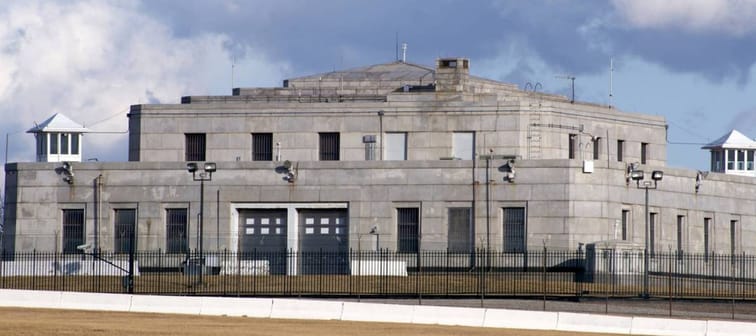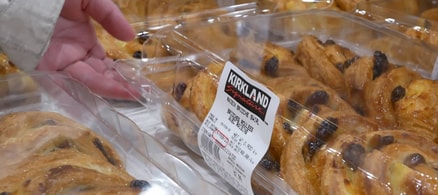1. It holds tons of gold — literally
Fort Knox currently houses 147.3 million ounces of gold. The government says the bullion has a "book value" of $6.22 billion.
However, that's based on a fixed price that officials set in 1973. Based on the current market value of gold, the reserves at Fort Knox are worth a far more impressive $273.7 billion, roughly speaking.
Much of the gold in the vault is in the form of 27-pound bars, while a percentage is in gold coins.
At one time, the point of having all of that gold was to provide backing for U.S. currency — but the dollar was taken off the gold standard in 1971.
More: How to invest in gold
Meet Your Retirement Goals Effortlessly
The road to retirement may seem long, but with WiserAdvisor, you can find a trusted partner to guide you every step of the way
WiserAdvisor matches you with vetted financial advisors that offer personalized advice to help you to make the right choices, invest wisely, and secure the retirement you've always dreamed of. Start planning early, and get your retirement mapped out today.
Get Started2. Is the gold really in Fort Knox?
So why does the U.S. hang onto its gold stash?
"Just in case we need it," is the explanation a former Federal Reserve Board chairman reportedly gave.
Conspiracy theorists have insisted that the government secretly sold off the gold and that the gold bars are actually tungsten bricks painted to look like the precious metal.
There's no way for outsiders to say with absolute certainty if there's really bullion — or if it's all bull. Over the years, there have been few audits to test the gold, or inventories to count it.
3. Outsiders rarely get inside
In 2017, Treasury Secretary Steve Mnuchin led a rare visit by outsiders to peek at the gold reserves inside the Fort Knox vault.
He was accompanied by Senate Majority Leader Mitch McConnell, and the two of them were photographed holding gold bars.
Afterward, Mnuchin had an answer for the conspiracy mongers. "Glad gold is safe!" he tweeted.
The last time Fort Knox had opened its vault to civilians was more than 40 years earlier.
During her tenure as Director of the U.S. Mint, Mary Brooks led a tour of the vault for members of Congress and the news media in 1974. U.S Treasury Secretary William E. Simon allowed the visit in an effort to quell rumors that all the gold had been removed from the vaults.
Kiss Your Credit Card Debt Goodbye
Having a single loan to pay off makes it easier to manage your payments, and you can often get a better interest rate than what you might be paying on credit cards and car loans.
Fiona is an online marketplace offering personalized loan options based on your unique financial situation.
When you consolidate your debt with a personal loan, you can roll your payments into one monthly installment. Find a lower interest rate and pay down your debt faster today.
Get Started4. Only one US president ever got inside
President Franklin Roosevelt commissioned the construction of Fort Knox in the mid-1930s, reportedly because the Treasury worried that U.S. gold reserves weren't safe from an enemy invasion.
Later, Roosevelt became the only U.S. president ever to set foot inside the gold vault’s titanic walls.
He traveled to Fort Knox to make an inspection in 1943, about seven years after construction on the vault was completed.
5. Building Fort Knox
Fort Knox contains 4,200 cubic yards of concrete, 16,000 cubic feet of granite, 750 tons of reinforced steel and 670 tons of structural steel. The cost of construction in the 1930s was a mere $560,000.
The roof is said to be bomb-proof, and the main vault door weighs 20 tons and is 21 inches thick. The Treasury says no one person knows the entire combination.
The door is resistant to torches, drills and explosives — not that any of that matters. The real challenge to any would-be intruder is reaching the building in the first place.
6. Guards and more guards
Fort Knox is guarded by members of the U.S. Mint Police, one of the oldest federal law enforcement agencies. It was established in 1792.
The officers undergo 12 weeks of basic training, followed by five weeks of field training. They learn a long list of heavy-duty skills, including weapons handling, cornering, door entry and room clearing.
If that doesn't seem intimidating enough, Fort Knox sits at the center of a 109,000-acre U.S. Army post and is a training ground for military troops from around the country.
7. A frail foreign visitor
Occasionally, the vault at Fort Knox has held other precious items, besides gold.
In 1939, one of the original copies of the Magna Carta — the Medieval English charter laying down basic human rights — was brought to the U.S. to go on exhibit at the New York World's Fair.
When World War II erupted, the delicate document was transferred to Fort Knox for safekeeping. The Magna Carta stayed in residence until 1947, when it went back to England.
But for a time, it had some treasured American roommates.
8. Very special guests from US history
World War II turned Fort Knox into a hotel of sorts for prized papers from both sides of the pond.
Originals of the Declaration of Independence, the Bill of Rights and the U.S. Constitution were moved to the gold vault out of fear that the nation’s capital would be attacked.
As the war wound down, the parchment was returned to its rightful home in Washington, D.C., in 1944. That left some room at Fort Knox for the next priceless guest.
9. Protection for a hallowed headpiece
Legend has it that Hungary's King Coloman, who reigned from 1095 to 1116, declared that the Holy Crown of Hungary, and not the king, was the true ruler of the realm.
During World War II, the crown was whisked out of Hungary to protect it from falling into the clutches of the Nazis or Soviets. It resurfaced in Austria in 1945 and was handed over to American forces.
The U.S. government brought the crown to Fort Knox for safekeeping. It remained there until 1978, when it was returned to Hungary by a delegation led by U.S. Secretary of State Cyrus Vance.
10. America's medicine cabinet
What else has Fort Knox held, besides gold and historic artifacts? How about a hoard of drugs? Morphine sulfate, to be exact.
During the Cold War, the U.S. military wanted to be certain that it had a healthy supply of pain meds in case foreign opium sources ever got cut off. So, in 1955, Fort Knox opened its doors to tons of opium.
The government spent millions refining the stuff into morphine in 1993. It's still stored at Fort Knox, alongside the gold.
That is, if the gold is really there.
Sponsored
Follow These Steps if you Want to Retire Early
Secure your financial future with a tailored plan to maximize investments, navigate taxes, and retire comfortably.
Zoe Financial is an online platform that can match you with a network of vetted fiduciary advisors who are evaluated based on their credentials, education, experience, and pricing. The best part? - there is no fee to find an advisor.







